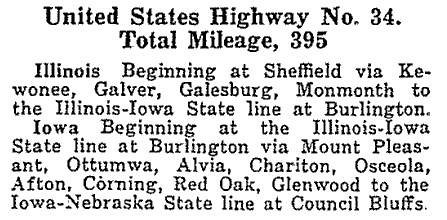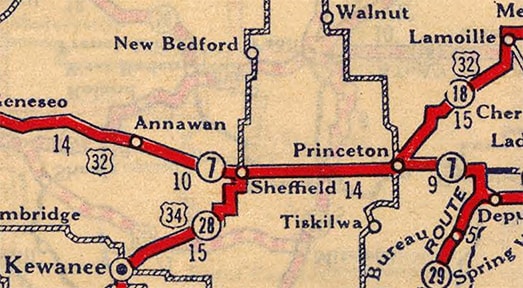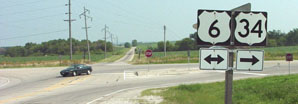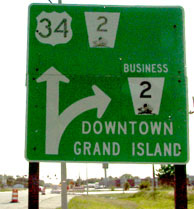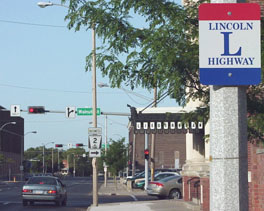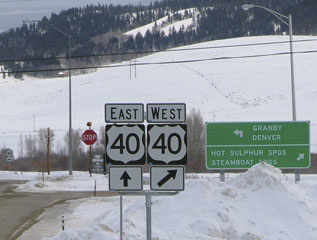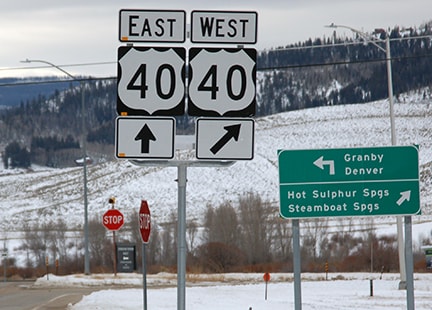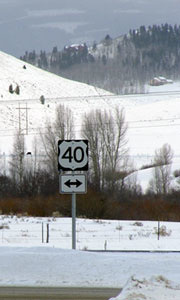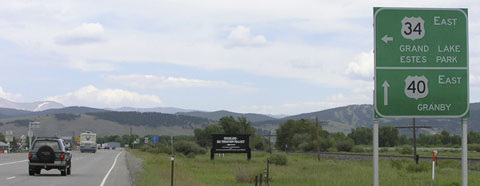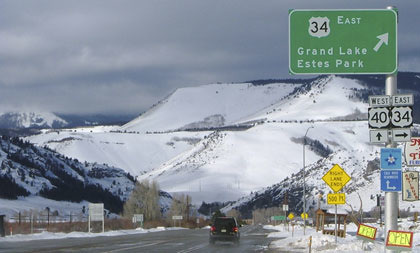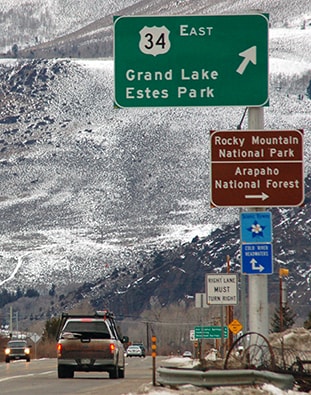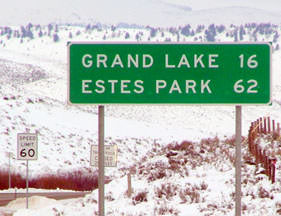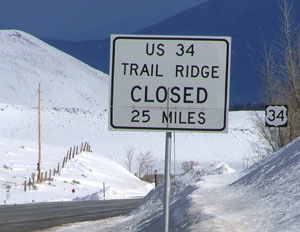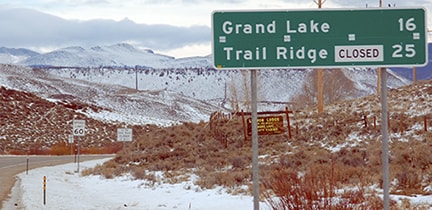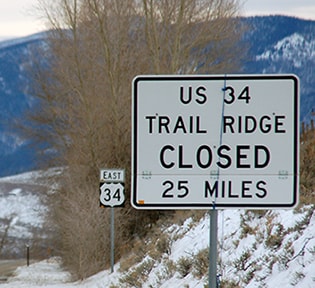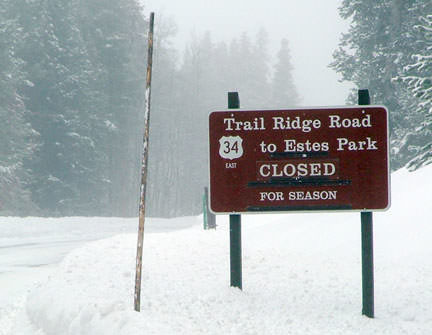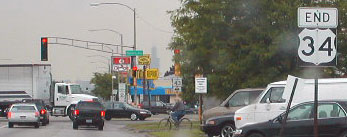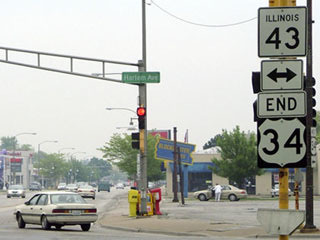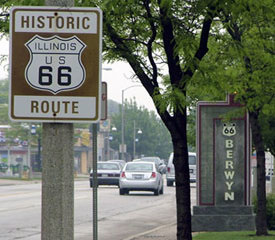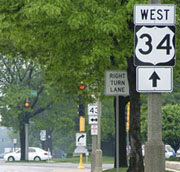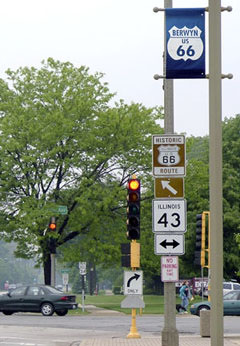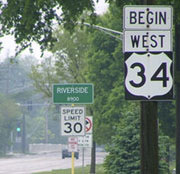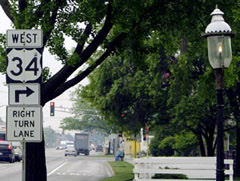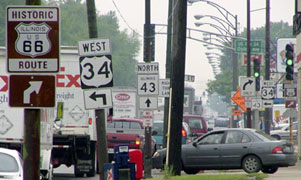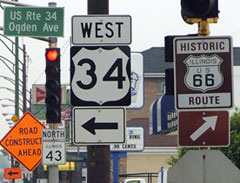End of US highway 34 |
|
1926-1933
|
1933-1935
|
1935-1938
|
1938-1970
|
1970-present
|
Mileage: in 1989 AASHTO listed a figure of 1122 miles for US 34... however, the distance has actually increased since then (because of a reroute in Iowa and Nebraska). As of 2020, US 34 measured 1127.8 miles in total length. Historically, when it went to downtown Chicago, US 34 was 1138.4 miles long.
Claim to fame: US 34 reaches the highest elevation of any US route: 12,183' along Trail Ridge Road through Rocky Mountain National Park in Colorado... although that segment of US 34 is open only during the summer months. For most of the year, an approx. 24-mile segment through the Park is closed to traffic.
|
US 34 was among the original 1926 routes, but it ran only from Council Bluffs to historic US 32 in Sheffield. This route description is from AASHO's Apr. 1927 route log:
|
|
Maps from the mid-1930s show that the east end of US 34 had been extended to Chicago, and that the route's west end was extended to Grand Island:
|
|
Today US 281 is routed on a newer bypass about 2 miles ahead -- but before that was built, US 281 was on Locust. So US 34 could have ended there, but it is more likely that it turned right with 281 for about 2 miles, ending downtown at its junction with US 30. The next photo, then, was looking east on First Street downtown (US 30). The next intersection is Walnut Street, and it is possible that the west beginning of US 34 was to the right:
|
Walnut curves into Locust a few blocks to the right.
|
That was just past the junction with County Road 6, but just before CR 40. Some of those signs would be more useful if they were posted on the far side of the intersection ahead.
|
In this area US 34 more or less follows the headwaters of the Colorado River down to its confluence with the Fraser River. US 40 follows the Fraser all the way down from the Great Divide at Berthoud Pass to its mouth near Granby, where it empties into the Colorado. At this junction, US 34 ends, and US 40 continues downstream along the Colorado. These photos show the sign one would see at the approach to the stop sign at US 40:
|
|
CDoT does not sign most of its US route termini, and US 34 is no exception. A driver sitting at the stop sign just ahead can only assume that the sign shown here (on the far side of the road) must mean that US 34 is all behind them:
|
The following shots were taken from eastbound US 40:
|
|
Visible in the background of those photos is a large overhead sign for traffic heading the opposite direction (west on US 40). The front side of that sign is shown here:
|
The light blue sign shows a Columbine (Colorado's state flower), which is used to denote the state's official "Scenic Byways". The dark blue sign gives the name of this specific route ("Colorado River Headwaters") and points out directions:
|
|
If a traveler took that right turn, they were soon greeted by the mileage sign shown here:
|
The control point "Estes Park" on these signs is interesting: that is correct only during summer weather. For the majority of the year, it is not possible to get to Estes that way, as evidenced by the sign posted just beyond the "Speed Limit 60" sign:
|
|
In a practical sense, US 34 is more often than not a route with two disconnected segments, separated by a gap through Rocky Mountain National Park. During the snow season, one can drive past the turnoff to Grand Lake, and sometimes up to ten miles north of the RMNP entrance station. But that is where the road is closed: if one is trying to connect with US 34 in Estes Park, they will need to turn around, and then they are looking at a drive of about four hours!
|
Snow removal crews strive to have Trail Ridge Road open by Memorial Day, but it is usually closed again by sometime in October. In other words, this westernmost 25-mile stretch of US 34 is isolated from the rest of the highway for about seven months out of each year. For more information about this part of US 34, check out this blog post.
In 1970, the US 34 designation was removed from downtown Chicago and truncated back to the intersection where it split from US 66. Below is one of the agenda items from AASHO's meeting in November of that year:
Despite the fact that US 66 itself was removed from the Chicago area a few years later (in 1977), the US 34 designation was not re-extended along its former route into downtown Chicago. Rather, US 34 still ends at the same place, at its historic junction with US 66, shown below:
|
Those were looking east on Ogden Avenue, just shy of where that road intersects Harlem Avenue (or IL hwy. 43). There are not many instances like this, where a US route ends at a state highway. Today, if one continues straight ahead on Ogden, they are no longer on a state highway, but they are on a segment of historic US 66 -- a fact not lost on the city of Berwyn:
|
Old 66 appears to be well-signed throughout Chicagoland. Heading the opposite direction on Ogden, the series of signs one encounters is shown here...
Note the historic US 66 markers; as previously mentioned, US 34 formerly continued east (right) with US 66 into downtown Chicago.
Research and/or photo credits: Neil Bratney; Chris Elbert; Jeff Morrison; Dale Sanderson; Michael Summa
Page originally created 1998;
last updated Dec. 15, 2023.
last updated Dec. 15, 2023.

